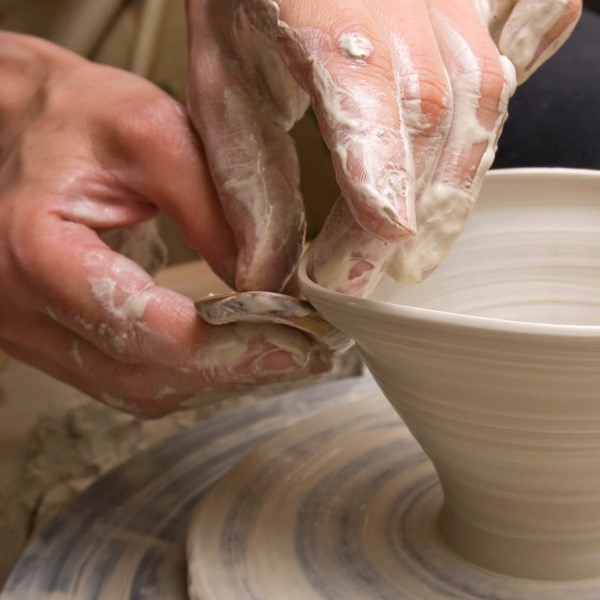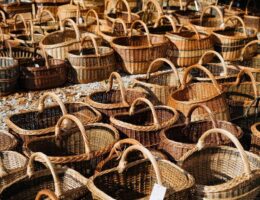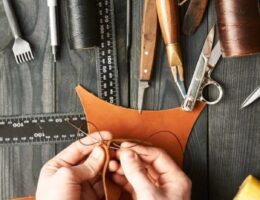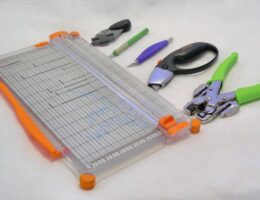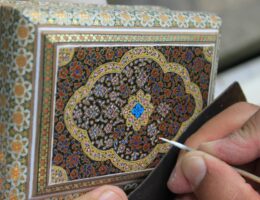IRAN ART EXHIBITION: INDONESIA USES NATURAL INGREDIENTS IN HANDICRAFTS PRODUCTS
Handicraft products are made from various types of natural sources. Compared to products that use artificial materials, natural ingredients are certainly better. One of the advantages of natural materials is environmentally friendly. For example crafts made from water hyacinth.
Water hyacinth is a natural material which is a natural fiber. Before this plant was used as raw material for handicraft products, the existence of this plant was even considered a pest. However, due to being a natural material for handicraft products, this plant has become valuable.
There are various kinds of natural ingredients that can be used as a variety of high-value products. Starting from soft as fiber, to hard as metal, also comes from nature. What are the various natural materials that can be used as handicraft products? The following information.
Natural Ingredients for Handicraft Products
Indonesia has abundant natural resources. This natural wealth produces a lot of natural materials that can be used as handicraft products. Indonesian handicrafts are widely known in foreign countries with very diverse forms, creative, innovative and always developing following the needs and technological developments. Here are various natural ingredients for handicraft products.
1. Clay
Crafts made of clay are commonly known to people with ceramic crafts. clay has plastic properties so it is easily formed. After being burned in the level according to the type of clay so that the clay becomes hard, solid, and waterproof.
2. Natural Fiber
Natural fiber is fiber derived from plants and animals. It’s called fiber, then it’s shaped like a tendril. To get the shape of the fiber, several stages of processing are needed depending on the character of the base material.
a. Water hyacinth
One of the most common natural fibers in Indonesia is water hyacinth. Water hyacinth becomes a nuisance plant for common people. However, for residents of certain areas such as Kulon Progo and Ambarawa water hyacinth, it becomes a promising source of income. Both of these areas become centers of handicrafts from water hyacinth.
The water hyacinth plant can also be made of various handicrafts because the fiber is quite strong enough so that various handicrafts can be made which must be dried in water hyacinth so that it is easy to form.
b. Pandan leaves
Pandan is a beach plant that was not used much. But now, many crafters are starting to use pandanus to be processed into various handicrafts. Pandan includes natural fibers that can be used for a variety of crafts. Examples such as bags, pencil cases and wallets.
c. Coconut Fiber
IRAN ART EXHIBITION: Coconut tree is a tree that all parts of the tree have a use value. From roots to leaves of coconut trees can be used for various purposes. One of the parts of a coconut tree that can be utilized is coconut fiber or coconut fiber (coconut skin). From coconut fiber, coconut fiber and powder can be obtained which can be processed into various products.
d. Banana Midrib
Most people think that banana (dry) fronds are useless rubbish. Sometimes even parents are burned because they are considered to pollute the garden. But now the banana midrib can be used as a beautiful and economically valuable painting work. In addition to paintings, handicrafts from banana stem fronds include bags, sandals, tissue boxes, and pencil cases.
e. Rattan
The part that is used from rattan plants is the bark. Separation of the bark usually uses a machine. Making rattan crafts can be done by weaving rattan into various forms of finished goods. But there are also handicrafts made from rattan in the form of rattan bars which are put together using nails, for example for tables and chairs.
3. Wood
Indonesia has many tropical forests which store the largest natural wealth of wood in the world. The wood produced many kinds. Among them: teak, mahogany, pine wood, sapodilla wood, jackfruit wood, coconut wood, and so on.
Crafts from wood is a craft that utilizes wood as the main material in its manufacture. The process of making wood crafts has several kinds of techniques. Among them, carving techniques, chisels, lathe, stroke and paste or connect both with construction, adhesives or nails.

4. Bamboo
Bamboo can be used as a variety of handicraft products with aesthetic and high economic value. Bamboo handicraft products appear with more attractive and artistic designs up to now widely used in star hotels, cottages, spas, boutiques, banks, shops and modern building interiors.
Some of the techniques in making natural handicrafts from bamboo are woven and sticky or sticky construction techniques. Woven Indonesia is well known in foreign countries with a variety of interesting motifs and shapes.
5. Skin
Leather produced from animals such as cows, goats, buffaloes, crocodiles, and other animals can be used as a basis for crafts. The process of making leather raw materials is quite simple. Cut animal skins washed first, stretched, then dried directly in the sun to dry. After drying, the skin is rubbed (tanned) to remove hair and dirt using a cutting knife. Then the skin is washed and dried again. After that, new skin can be used.
6. Metal
IRAN ART EXHIBITION: Artificial materials that are included in the metal category are also many kinds, such as: gold, silver, bronze, aluminum, iron, and brass. Areas producing gold crafts are in South Kalimantan and Java. Silver handicrafts are found in the regions of Yogyakarta, West Sumatra and Bali.
Metallic natural materials are often made as jewelry or accessories and then developed as decorative and other functional objects, such as: glass, teapots, trays, versatile containers and even trophies as a symbol of the championship. Metal has hard properties so that in its processing requires techniques that are not easy, such as processed by fuel / heating and forging techniques.
7. Stone
The land of Indonesia is spread over a wide variety of sparkling and colorful stones. Martapura area, Kalimantan is a producer of color stones that are considered very unique, Tulungagung produces marble, Pacitan produces precious stones of various shapes and colors.
Many regions in Indonesia make color stones as handicraft products such as fashion accessories, as well as decorative items, interior and exterior decoration and others. Color stone processing techniques as handicraft products must be ground first, then assembled. For interior and exterior, carving and carving techniques are used.
That’s a variety of natural ingredients that can be used as a variety of craft products. Hopefully this information can add to our horizons.
